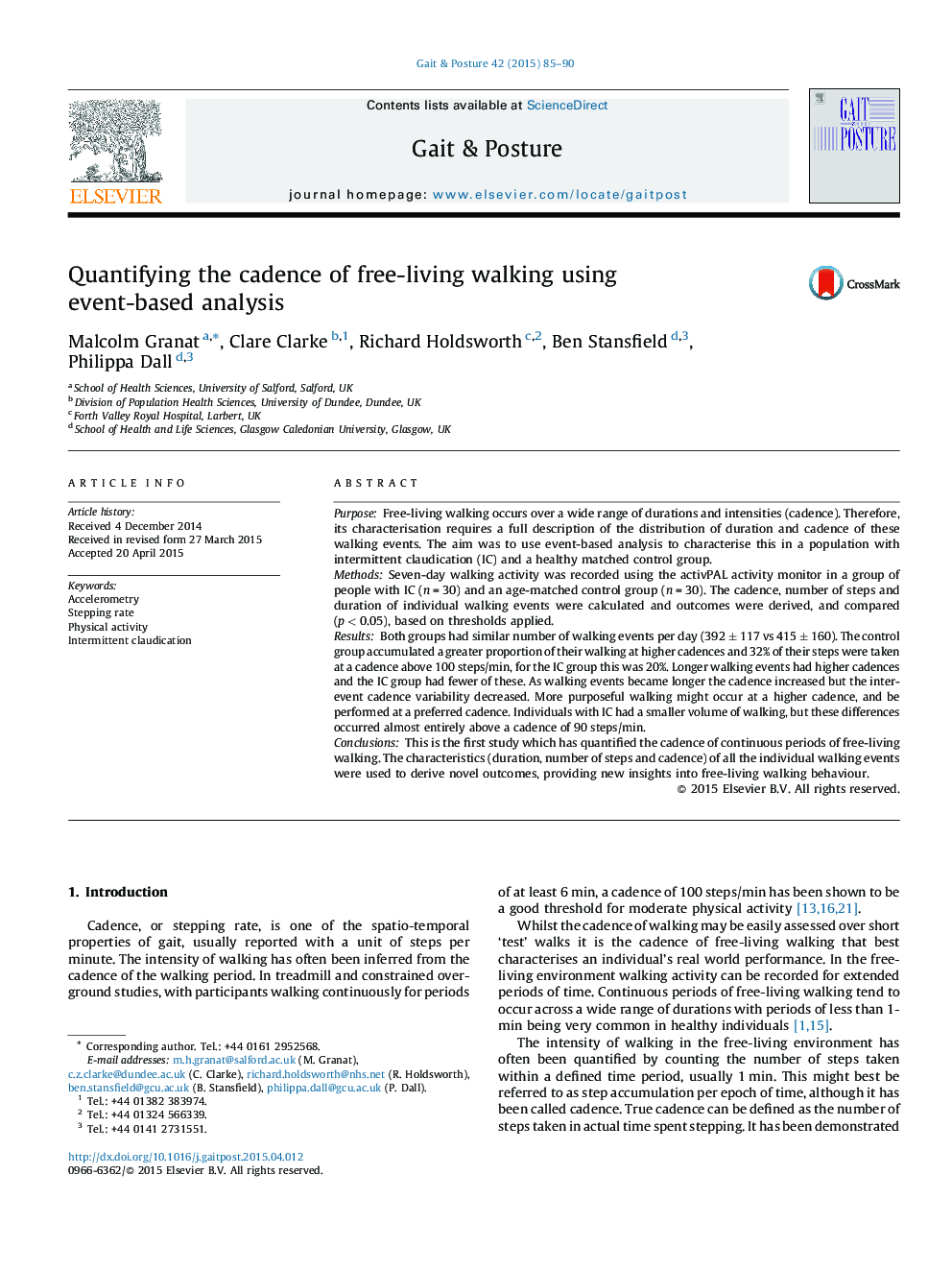| Article ID | Journal | Published Year | Pages | File Type |
|---|---|---|---|---|
| 6206066 | Gait & Posture | 2015 | 6 Pages |
â¢Using event-based analysis outcomes for cadence of free-living walking were proposed.â¢Continuous seven day recordings were made on both a clinical and a healthy population.â¢Differences between groups in the cadence of free-living walking were characterised.â¢Longer walking periods occur at a higher cadence and performed at a preferred cadence.â¢People with intermittent claudication walk for less above a cadence of 90 steps/min.
PurposeFree-living walking occurs over a wide range of durations and intensities (cadence). Therefore, its characterisation requires a full description of the distribution of duration and cadence of these walking events. The aim was to use event-based analysis to characterise this in a population with intermittent claudication (IC) and a healthy matched control group.MethodsSeven-day walking activity was recorded using the activPAL activity monitor in a group of people with IC (n = 30) and an age-matched control group (n = 30). The cadence, number of steps and duration of individual walking events were calculated and outcomes were derived, and compared (p < 0.05), based on thresholds applied.ResultsBoth groups had similar number of walking events per day (392 ± 117 vs 415 ± 160). The control group accumulated a greater proportion of their walking at higher cadences and 32% of their steps were taken at a cadence above 100 steps/min, for the IC group this was 20%. Longer walking events had higher cadences and the IC group had fewer of these. As walking events became longer the cadence increased but the inter-event cadence variability decreased. More purposeful walking might occur at a higher cadence, and be performed at a preferred cadence. Individuals with IC had a smaller volume of walking, but these differences occurred almost entirely above a cadence of 90 steps/min.ConclusionsThis is the first study which has quantified the cadence of continuous periods of free-living walking. The characteristics (duration, number of steps and cadence) of all the individual walking events were used to derive novel outcomes, providing new insights into free-living walking behaviour.
